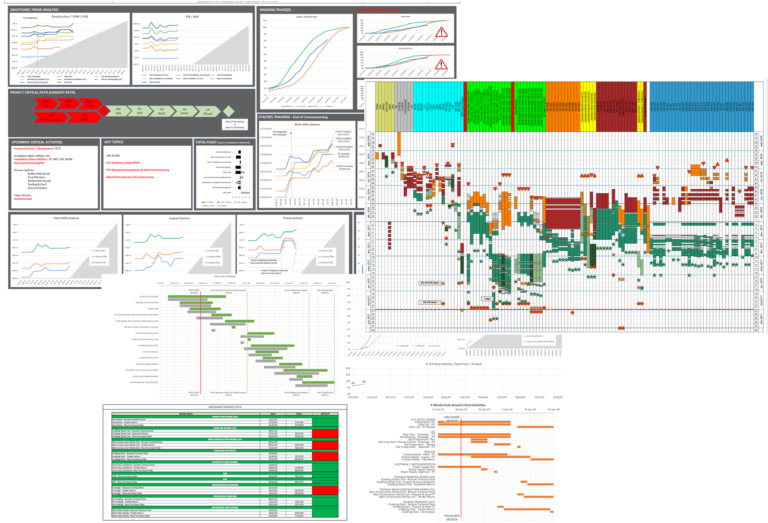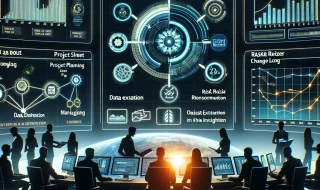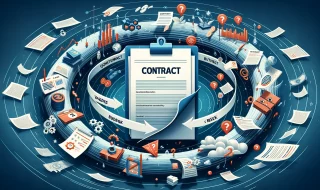Project monitoring is an essential part of project management. It consists of checking and evaluating the progress of a project as compared to its initial plan. Project monitoring allows corrective action to be taken in the event of deviations from objectives, deadlines or forecast costs. Below, we spell out methods and techniques for ensuring effective project monitoring and review.
Starting project monitoring
The starting point for project monitoring is the definition of the project objectives, which must be aligned with the aspirations of the company and all the stakeholders involved in the project.
Next, it is essential to look at the resources and means required to carry out each task and activity in the project. This refers to both technical and human resources. The composition of the project team comes into play here. It is essential that the team is made up of people with the right skills to carry out the tasks assigned to them.
Finally, project monitoring looks at results and performance indicators. Is the project meeting its objectives? If not, what measures can be taken to remedy the situation? What resources are available?
The project monitoring phase provides an opportunity to adjust the project if it is having difficulty meeting the operational constraints.
The Project Manager is in charge of project monitoring
It is the Project Manager who is in charge of project monitoring. Their role is to analyse:
- Project status at a given time
- The status of the project at different stages
- Any budgetary or other changes and the corrective measures to be implemented
But also to ensure:
- Financial monitoring
- Deadline monitoring
- Risk monitoring
- Managing deliverables
During project monitoring and review, the Project Manager collects and analyses data to measure the project’s progress. During this period, the Project Manager is also responsible for reporting to stakeholders on the progress of the project, providing them with an overview and taking into account the performance indicators. Reporting allows for any necessary changes to the project to be made.
Why implement project monitoring?
Managing project monitoring and control makes it possible to:
- Meet established deadlines and quickly identify any problems with planning.
- Carefully monitor the budget to stay within budget
- Check the quality and conformity of the project at every stage
- Implement risk management and any action required
What methodology should be used to implement project monitoring?
When undertaking project monitoring, the Project Manager must carry out regular checks from project launch to project closure. To do this, they need to liaise with the project team. They may adopt the following methodology:
- Draw up the project roadmap to include monitoring and review tools, frequency of reporting and key performance indicators (KPIs) to be monitored.
- Define a common thread to be followed, including scope, planning, budget and quality, so that it serves as a reference for monitoring and review activities.
- Periodically assess the state of the project to ensure that the KPIs reflect the objectives, so that corrective action can be taken quickly to minimise the impact of any deviations.
- Identify project risks and their potential impact on project objectives. Draw up action plans, if necessary, to circumvent them or mitigate their consequences.
- Implement corrective measures to refocus the project if deviations from the baseline are observed.
- Produce regular reports for stakeholders, promoting effective communication and guaranteeing a uniform information flow for all those involved.
What tools should be used for project monitoring?
Once the methodology has been defined, the use of appropriate project management tools will facilitate the monitoring processes during the various phases. So you will need:
A dashboard to visualize and communicate project status
A basic project management tool, this collects and displays all the relevant project information in one place, in real time: tasks to be carried out, resources, deadlines, performance indicators, etc.
Diagrams for visualization
Gantt charts are undoubtedly the best known. These make it possible to view the project schedule and model task planning.
Depending on the complexity of the project, a PERT chart may be more appropriate, as it enables a large number of tasks to be managed over a long period.
Earned Value Management (EVM)
Earned value management provides a link between project schedule and project costs to ensure that both criteria are met. The EVM enables any discrepancies to be identified and the necessary action taken.
Performance indicators (KPIs)
Key performance indicators are excellent tools for steering and monitoring projects. They fall into three categories:
- Cost
- Deadlines
- Resources
These three indicators enable discrepancies to be assessed at each stage of the project and corrective action to be taken if necessary.
In conclusion
Monitoring a project is essential to ensure its quality and success and to achieve the objectives set. By using the right project management methodology and tools, you can ensure meticulous monitoring and avoid deviations as far as possible.
Choosing PROPRISM to ensure controls of your projects
PROPRISM deploys its expertise in Project Controls to offer you solutions tailored to the management and control of your projects. We have a team of experts capable of improving the quality of your projects, promoting productivity and strategic alignment, as well as reducing costs and ensuring deadlines. PROPRISM operates in the pharmaceutical, marine, construction, engineering, transport and infrastructure, and chemical industries.
Our experts play a key role in the success of your projects. Their experience is employed to ensure that resources are properly allocated and that budget forecasts are adhered to. Using agile methods and project management tools that encourage adaptability and responsiveness to change, they encourage improvement and productivity in project management. PROPRISM also plays an essential role in providing advice and assistance, and supports your teams throughout the project life cycle with ongoing training. We also ensure coordination and motivation throughout the project to guarantee its success. Thanks to our solid expertise and essential teamwork, we can work with you to make your projects successful.




